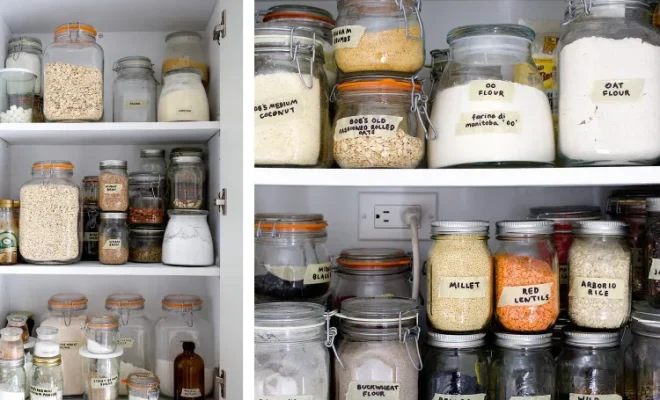27 Simple Ways to Stock a Spice Rack

A well-stocked spice rack is essential for every home cook. With the right variety of spices, it’s easy to create flavorful dishes on the fly without needing too many extra ingredients. Whether you’re a seasoned chef or a beginner in the kitchen, here are 27 simple ways to stock up on essential spices and keep your spice rack organized.
1. Start with basic spices: Begin by stocking up on essential spices such as black pepper, salt, paprika, and garlic powder.
2. Add some heat: Include cayenne pepper, red pepper flakes, and chili powder to spice up your dishes when needed.
3. Don’t forget the herbs: Basil, oregano, rosemary, thyme, and parsley are essential for making traditional Italian cuisine.
4. Go for aromatics: Cumin, coriander, and turmeric are must-haves for Indian cooking.
5. Sweeten things up: Cinnamon, nutmeg, and allspice will benefit your sweet and savory dishes alike.
6. Bold flavors are key: Purchase sumac and za’atar to add depth to your Mediterranean recipes.
7. Fragrant complements: Star anise and cloves are perfect for adding an aromatic touch to soups and stews.
8. Store whole spices: Whole spices last longer than ground versions; invest in a mortar and pestle or spice grinder for the freshest taste.
9. Go for blends: Purchase pre-made blends like curry powder or taco seasoning to simplify meal prep.
10. Label everything: Use clear labels or markers to indicate each spice’s name and expiry date on its container.
11. Keep them out of sunlight: To prevent flavor loss from light exposure, store spices in a dark cabinet or pantry rather than on a countertop.
12. Prioritize freshness: Regularly check expiration dates or purchase smaller quantities of spices to avoid spoilage.
13. Properly store spices: Use airtight jars or containers to prolong the shelf life of your spices.
14. Experiment with global flavors: Discover new ingredients like garam masala or adobo seasoning for a taste of different cuisines.
15. Stick to a color-coded system: Group similar-colored spices together on your spice rack for easy identification.
16. Organize alphabetically: Arrange your spices in alphabetical order for quick access.
17. Purchase matching jars or racks: Aesthetically pleasing storage solutions can make it easier and more enjoyable to reach for spices while cooking.
18. Store frequently-used items front and center: Place staples like salt, pepper, and garlic powder where they’re easiest to access.
19. Keep track of inventory with a list: Maintain an up-to-date list of your spices and their quantities, so you know when it’s time to restock.
20. Update your collection frequently: Periodically reassess your needs and experiment with new flavors to keep meals interesting and varied.
21. Consider smaller spice racks: Large spice racks can be overwhelming; opt for a smaller one if you’re starting from scratch or have limited space.
22. Invest in multi-tiered storage options: Stackable shelves help maximize vertical space and keep spices visible and within easy reach.
23. Utilize wall storage: Mountable shelves allow you to take advantage of empty wall space without taking up valuable counter or cabinet real estate.
24. Rotate older items forward as needed: Use the “first-in, first-out” method when restocking your spice rack, moving older products toward the front so you use them before they lose their potency.
25. Create homemade blends: Branch out by making your spice blends, such as Italian seasoning or pumpkin pie spice—the combinations are endless!
26. Stock whole spices: Like cinnamon sticks, cloves, and allspice berries for boiling in teas or mulled beverages.
27. Keep pre-made spice: Rubs on hand (like BBQ or steak seasoning) for a quick and simple way to season meats before grilling.






